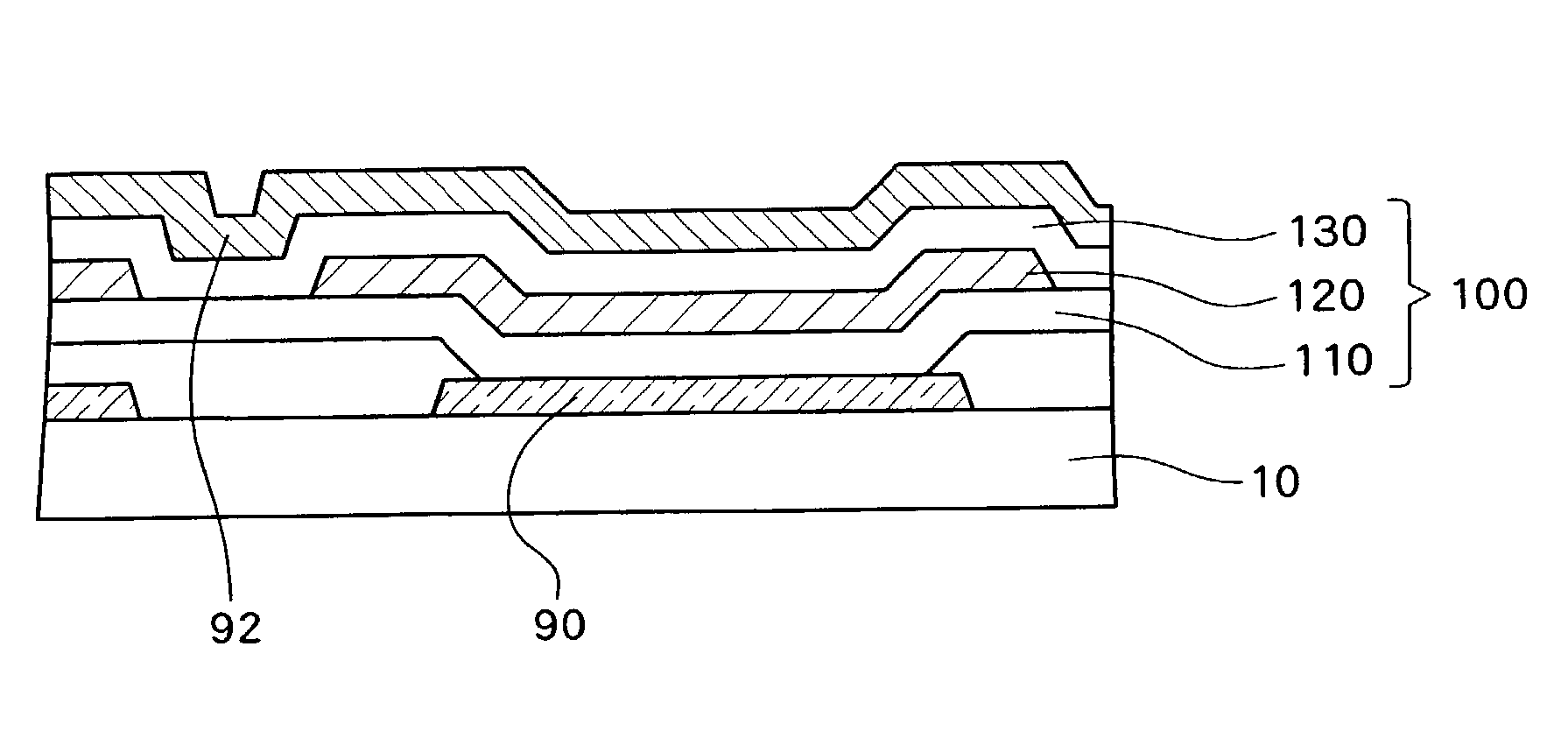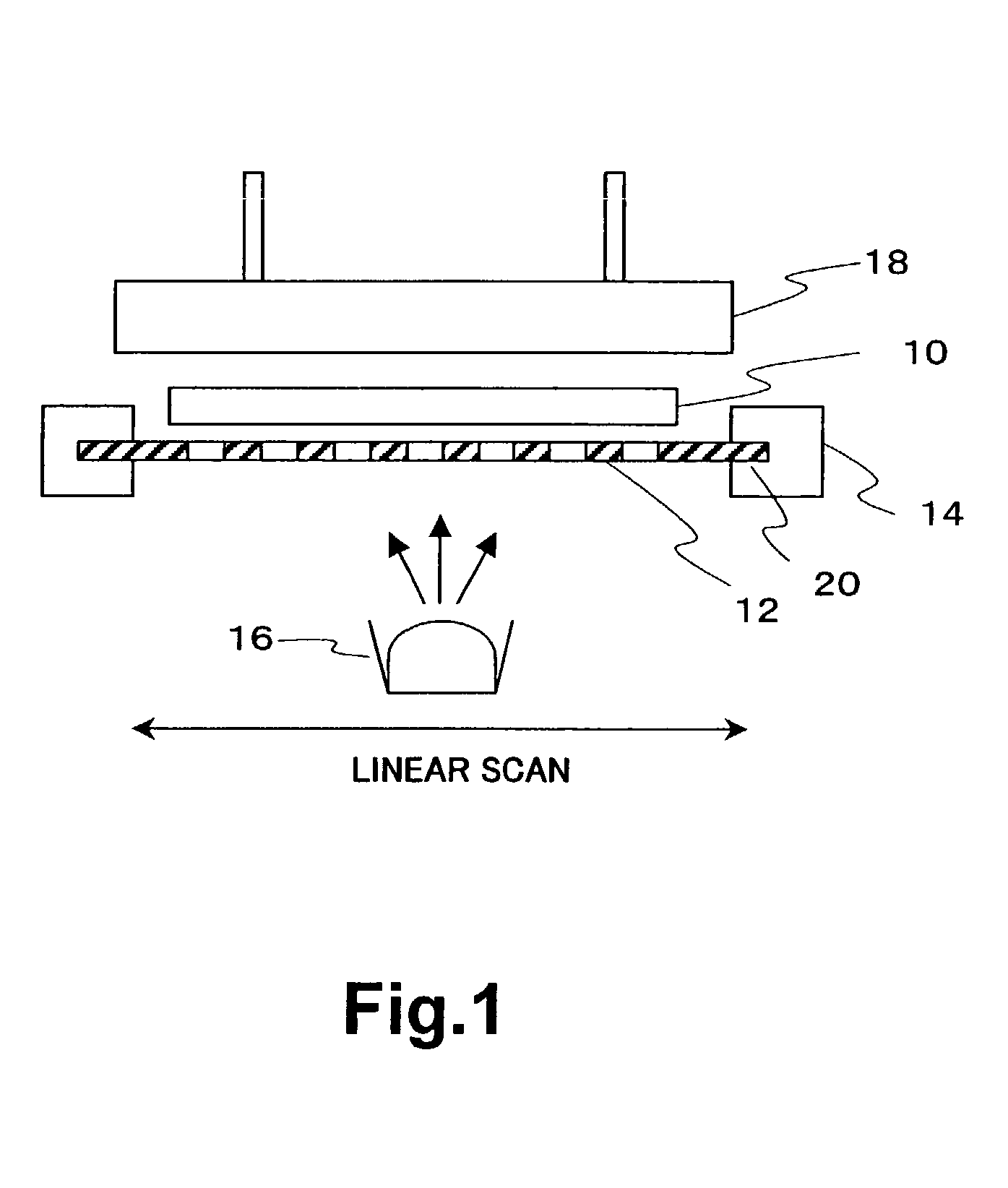Method for manufacturing electroluminescence element and evaporation mask
a technology of electroluminescence element and evaporation mask, which is applied in the direction of electroluminescent light sources, vacuum evaporation coatings, coatings, etc., can solve the problems of inability to achieve sufficient patterning precision in the evaporation layer, and the possibility of employing a method
- Summary
- Abstract
- Description
- Claims
- Application Information
AI Technical Summary
Benefits of technology
Problems solved by technology
Method used
Image
Examples
Embodiment Construction
[0024] A preferred embodiment of the present invention will now be described referring to the drawings. FIG. 1 is a diagram for explaining an example method for manufacturing according to a preferred embodiment.
[0025] An evaporation mask 12 is placed below a plastic substrate 10 for forming a portion of an EL panel, the evaporation mask 12 having an overall size greater than that of the plastic substrate 10. Although in FIG. 1, the plastic substrate 10 and the evaporation mask 12 are shown separated from each other, in practice the plastic substrate 10 and the evaporation mask 12 are in contact with each other over almost their entire surface. The ends of the mask 12 are supported by a supporting mechanism 14.
[0026] Below the evaporation mask 12, an evaporation source 16 is placed for heating an evaporation material to a temperature of, for example, approximately 300.degree. C. In this example, the evaporation source 16 is moveable in the right and left direction of the page and int...
PUM
| Property | Measurement | Unit |
|---|---|---|
| temperature | aaaaa | aaaaa |
| temperature | aaaaa | aaaaa |
| temperature | aaaaa | aaaaa |
Abstract
Description
Claims
Application Information
 Login to View More
Login to View More - R&D
- Intellectual Property
- Life Sciences
- Materials
- Tech Scout
- Unparalleled Data Quality
- Higher Quality Content
- 60% Fewer Hallucinations
Browse by: Latest US Patents, China's latest patents, Technical Efficacy Thesaurus, Application Domain, Technology Topic, Popular Technical Reports.
© 2025 PatSnap. All rights reserved.Legal|Privacy policy|Modern Slavery Act Transparency Statement|Sitemap|About US| Contact US: help@patsnap.com



